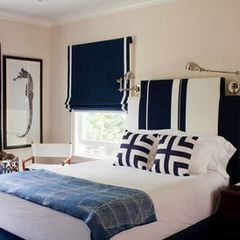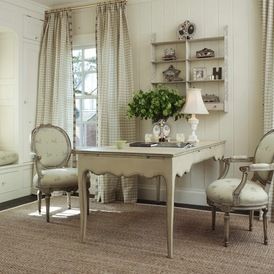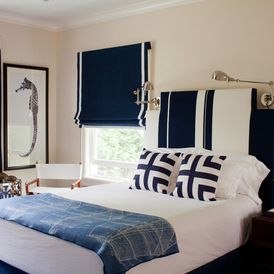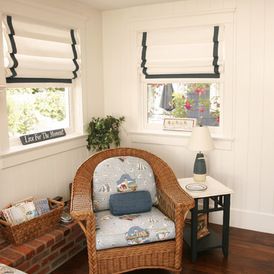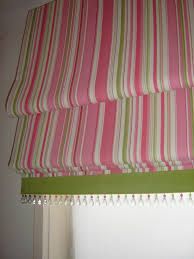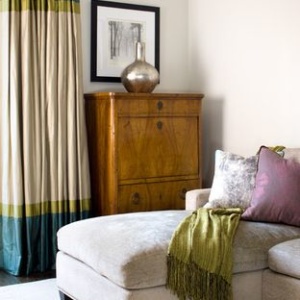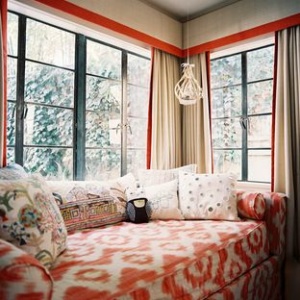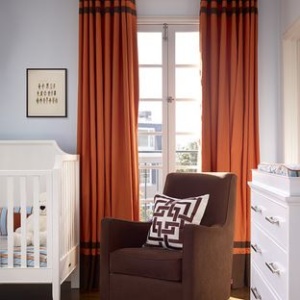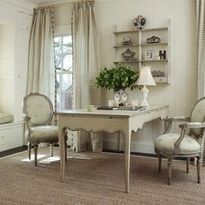
Banding is a designer trick we use to add drama without detracting from the room. This designer detail crosses all décor genres, and looks equally at home in minimal and modern décor, Shabby Chic or Hampton’s beach style.
When your décor calls for a little something special, add banding to your curtains along the leading edges — the vertical edges where curtains meet. This is an ideal place for a permanent pop of colour or change of texture.
Banding your curtains on the leading and return edges of curtain panels provides contrast and helps define the architecture of your windows. Using contrasting colours and fabrics when banding curtain panels is a great way to give your curtains a dramatic, two-toned effect.
Banding is also very effective when used horizontally – either along the lower edge or across the top. Bands can be solid, accented colours or patterns.
There’s no rule against mixing your fabrics. In fact, when you mix fabrics, you can add texture or sheen to an otherwise bland design. If the drapery in a young girl’s room, for example, is grey fabric, a hot-pink or white border may be just the thing to perk up the space. Or if the living room’s dark curtains feel a bit too weighty, lighten then with a cream band.
When choosing solid bands for patterned curtains or vice versa, pull a colour from the pattern.
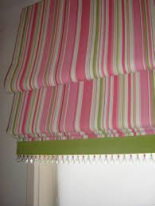

For example, if your drapery has a vibrant orange and blue ikat print on a white background, use orange banding along the curtains’ inner edges for high impact or blue bands for a mellower touch. Mixing patterns can be a design no-no, but not when done correctly. As long as the prints vary — polka dots against stripes, large flowers alongside tiny posies — the look can be interesting, bold and aesthetically pleasing.
Your curtain bands can be any width. Choose the width by factors such as how the fabric hangs when the curtains are gathered or open.
Banding can be skilfully used to tie a room décor together. For example, use a banding that is the same colour as a piece of furniture – this will anchor the space. Or, have the banding in a pattern that ties back with scatter cushions.
Banding looks particularly stunning on Roman blinds – it is a good way to add drama and interest to an otherwise small window, or to make a very wide Roman blind look less bland if a plain colour with no pattern is the main fabric.
I love Roman blinds trimmed with banding along the lower edge. We use this trick in girl’s rooms – and then add a bit of bling such as coloured beading or pom poms. For young girls rooms a pretty two tone stripe such as pink and green with a polka dot band is gorgeous! For a teenager, try a black Roman trimmed with silver and then add clear drop beads along lower edge – the effect looks like a chandelier.
For a boy’s room, a navy Roman blind trimmed in white is smart and masculine. This look crosses many age groups and is not limited to child’s décor.
Happy Banding!
If you need some help just fill out our briefing form
